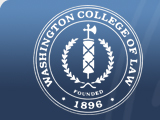Abstract
This past spring marked the fortieth anniversary of Tinker v. Des Moines Independent Community School District, the landmark student speech case in which the Supreme Court held that three students were protected by the First Amendment when they wore black armbands in their Des Moines, Iowa public schools to protest the Vietnam War. Looking at Supreme Court precedent alone, it would seem as though the Tinker tests were created out of whole cloth: the substantial or material disruption, reasonable anticipation of such disruption, and rights of others tests did not have much of a basis in earlier Supreme Court decisions. But, the district court in Tinker had employed the first two of these tests. For authority, it had looked to the Fifth Circuit’s decisions six weeks prior in two cases involving high school students’ speech about civil rights: Burnside v. Byars and Blackwell v. Issaquena County. Aside from Tinker’s citations to Burnside and Blackwell, those two cases - the roots of Tinker’s disruption tests - have largely been lost to history. Accordingly, this Article scrutinizes Burnside and Blackwell, considers lower courts’ applications of - and retreat from - the Burnside/Blackwell actual disruption test in the student speech context, and analyzes the presence of Burnside and Blackwell in the Tinker district court opinion and in various drafts of the Tinker Supreme Court opinion. Struggles for students’ speech rights and battles waged by the Civil Rights Movement rarely are seen as intertwined strands of history, but this Article demonstrates that the student free speech rights articulated in Tinker are built upon the struggles of the Civil Rights Movement.
Recommended Citation
Bowman, Kristi L. “The Civil Rights Roots of Tinker's Disruption Tests Tinker Turns 40: Freedom of Expression at School and Its Meaning for American Democracy - April 16, 2009 – Symposium.” American University Law Review 58, no. 5 (June 2009): 1129-1165.

